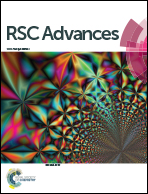Structure evolution, amorphization and nucleation studies of carbon-lean to -rich SiBCN powder blends prepared by mechanical alloying
Abstract
A number of carbon-lean and -rich SiBCN powder blends were subjected to mechanical alloying by high-energy ball milling generating a composite microstructure with varying proportions of amorphous and crystalline phases. Microstructural characterization at different milling stages and the evolution of free carbon and nanocrystalline SiC are discussed by using X-ray diffraction, Raman spectroscopy, transmission electron microscopy and nucleation magnetic resonance. Furthermore, the chemical bonding states of various SiBCN powder blends at different stages of milling were studied by FT-IR. The amorphization of carbon for carbon-lean powder blends was somewhat quicker than for carbon-rich analogues, which retained t-carbon and multiple graphene structures after being subjected to 40 h of milling. The chemical bonding state changes are similar for all investigated powder blends, while detailed microstructure changes are evident and consist of a considerable amorphous nature and a small amount of nanocrystallites after 40 h of milling. The forming nanograins are assigned to Si and SiC for carbon-lean and -rich powder blends, respectively. Ball milling leads to alloying, complete or partial solid state amorphization, accompanied by strain-induced heterogeneous or homogeneous nucleation of nanocrystalline phases from an amorphous matrix.


 Please wait while we load your content...
Please wait while we load your content...